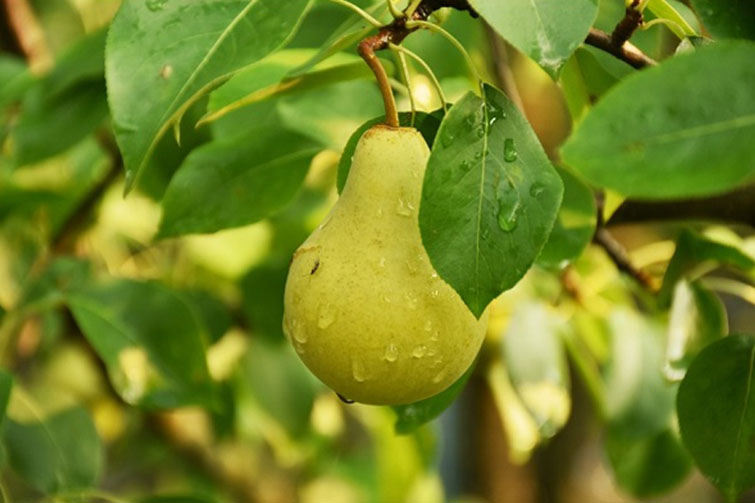

How to Store Apples for Long-Term Freshness
Apples are one of the most popular and versatile fruits enjoyed worldwide. With their natural sweetness, high fiber content, and rich nutrient profile, apples make a healthy and convenient snack. However, keeping apples fresh over extended periods requires proper storage techniques to prevent spoilage and maintain their crisp texture and flavor. Here’s a guide on how to store apples for the long term while keeping them delicious.
1. Choosing the Right Apples for Long-Term Storage
Not all apple varieties are ideal for long-term storage. Some types, like Fuji, Honeycrisp, and Granny Smith, have a naturally longer shelf life and can stay fresh for months under the right conditions. Softer varieties like Gala or Golden Delicious, while flavorful, are generally more prone to spoilage and are better suited for short-term consumption.
It’s essential to start with fresh, undamaged apples. Select apples that are firm, free from bruises, cuts, or signs of rot. Even a small bruise can lead to quicker spoilage, as apples produce ethylene gas—a natural compound that promotes ripening. Damaged apples will release more ethylene, causing nearby apples to ripen and spoil faster.
2. Optimal Storage Conditions for Apples
Apples last longest when stored in a cool, humid environment. Here are some key conditions to maintain:
Temperature: Apples should be kept between 30–35°F (-1–1°C). A slightly colder temperature is ideal for slowing the ripening process without freezing the fruit. While a refrigerator is perfect for this, a cool basement or root cellar can also work if temperatures are consistently low.
Humidity: Apples thrive in a humid environment with a relative humidity level of 90–95%. This humidity level helps prevent apples from drying out and losing their crisp texture. To increase humidity in the storage area, you can use damp paper towels or plastic bags with ventilation holes to retain moisture around the apples.
Air Circulation: While keeping humidity high, good air circulation is also crucial to prevent mold and decay. Avoid tightly sealing apples in bags, and store them in well-ventilated containers or loosely arranged bins.
3. Storing Apples in the Refrigerator
The crisper drawer in the refrigerator is often the best spot for apples, as it tends to have higher humidity than other parts of the fridge. Here’s a step-by-step guide:
- Separate by Variety: Different apple varieties have varying shelf lives and will ripen at different rates. Storing apples by type can help monitor them for freshness and quality.
- Bag Storage: Place apples in perforated plastic bags, which help trap humidity but allow for some airflow. Alternatively, you can wrap apples individually in newspaper or paper towels to reduce the spread of ethylene gas and prevent bruising.
- Avoid Storing with Other Fruits: Apples release ethylene gas, which can cause other fruits, like bananas and pears, to ripen and spoil more quickly. Storing apples separately will help maintain freshness for both apples and other produce in your refrigerator.
4. Alternative Long-Term Storage Methods
If refrigerator space is limited, consider alternative storage techniques:
- Basement or Root Cellar: If you have a cool, dark, and humid basement, this can be an ideal environment for apple storage. Arrange apples in shallow boxes or bins, with each apple separated to avoid contact. Rotate them occasionally to check for spoilage.
- Freezing: For an even longer storage period, apples can be frozen. Peel, core, and slice the apples before freezing, and store the slices in an airtight container. While frozen apples lose some of their crisp texture, they’re perfect for baking, cooking, and making applesauce.
- Dehydration: Dehydrated apples are a great alternative if you don’t have cold storage space. Use a dehydrator or a low-temperature oven to dry apple slices. Once dried, store the apple slices in an airtight container in a cool, dark place for months of storage.
5. Regularly Check for Spoilage
Even under ideal conditions, some apples may spoil faster than others. Inspect your apples every couple of weeks, removing any that show signs of bruising or rot. This prevents one bad apple from accelerating the spoilage of others around it.
Conclusion
By selecting the right apples, storing them in a cool, humid environment, and regularly checking for spoilage, you can keep apples fresh and delicious for months. Whether using a refrigerator, root cellar, or alternative methods like freezing and drying, you’ll be able to enjoy the taste and nutritional benefits of apples throughout the year.





